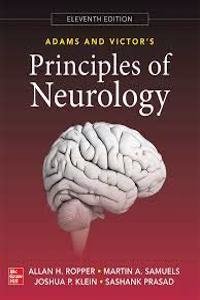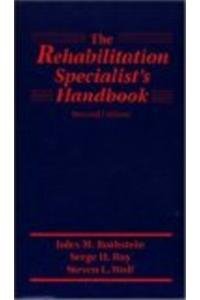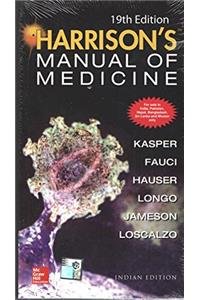Only logged in customers who have purchased this product may leave a review.
Sale!
Textbook on Ward management in Nursing Practice (Paperback) | Released: 30 Jul 2014
By: I Clement (Author) Publisher: Jaypee Brothers Medical Publishers15.00% Off Original price was: 675.00$.574.00$Current price is: 574.00$.
You save 101.00$
• Strictly as per syllabus of Indian Nursing Council on Ward Management.• Concise, simplified and easy to use. • Student-friendly presentation.• Helps to build leadership skills in nurses.• Understand the management responsibility.• Helps to provide total quantity care to the patient. About the AuthorI Clement MA (Sociology), MA (Child Care... Read More
In stock
Ships within 1-2 Business Days

100% Orginal Books

Easy Replacement

Certified product

Secure Checkout

On time delivery
Author:
![]()
I Clement
Publisher Name:
![]()
Jaypee Brothers Medical Publishers
Language:
![]()
English
Binding:
![]()
(Paperback)
About The Book
• Strictly as per syllabus of Indian Nursing Council on Ward Management.• Concise, simplified and easy to use. • Student-friendly presentation.• Helps to build leadership skills in nurses.• Understand the management responsibility.• Helps to provide total quantity care to the patient. About the AuthorI Clement MA (Sociology), MA (Child Care & Education)
MSc (Nursing), PhD (Nursing)Table of Contents: SECTION-1 Introduction
Chapter 1 Introduction to Ward Management 1
Factors Influencing Ward Management 2
Functions of Ward Sister 5
Organization Principles in Ward Management 8
Chapter 2 Management 10
Definitions 10
Concept of Management 11
Characteristics of Management 11
Management is a Profession 11
Principles of Management 12
Levels of Management 14
Steps of Management Process 15
Functions/Activities of Management 16
Chapter 3 Nursing Service Department 19
Meaning of Nursing Service 19
Definition 20
Nursing Service Department 20
Essentials of Nursing Service 20
Classification of Nursing Practice Personnel 21
Functions of the Nursing Service Department 21
Factors Influencing Nursing Service 22
Common Nursing Service Activities 26
Roles and Responsibilities 26
Chapter 4 Nurse Manager 28
Meaning of Nurse Manager 28
Qualities of Manager 29
Basic Functions of a Manager 29
Responsibilities of Nurse Manager 30
Role of Nurse Manager 32
Social Responsibilities of the Manager 34
Chapter 5 Ward Environment 38
Nursing Unit Environment 38
Essential Areas and Facilities 39
Influence of External Environment 40
Furnishing Patient Unit 42xii Textbook on Ward Management in Nursing Practice
Chapter 6 Patient Care Management 44
Principles of Quality of Nursing Care 44
Administrating Nursing Care to the Patient 46
Factors that Influencing Quality Patient Care 47
Methods of Patient Care 48
Role and Functions of a Nurse 50
Management of Patient Care 51
Patient Safety in the Hospital 55
SECTION-2 Principles of Management
Chapter 7 Planning 57
Definition 58
Principles of Planning 58
Importance of Planning 58
Characteristics of Planning 59
Compartment of Planning 59
Types of Planning 60
Methods of Planning 61
Chapter 8 Organization 66
Definition 66
Aims of Organization 67
Nature of Organization 67
Importance or Organization 68
Types of Organization Structure 69
Principles of Organization 69
Principles of Organization in Nursing 72
Principles of Organization by Henri Fayol 72
Organization Charts 77
Benefits of Good Organization 78
Types of Organization 79
Chapter 9 Directing/Leading 89
Definition 89
Characteristics of Direction 90
Principles of Directing 90
Issuing Orders in Direction 92
Characteristics of Good Orders 92
Elements of Direction 93
Chapter 10 Leadership in Nursing 95
Definition 95
Importance of Leadership 96
Characteristics of Leadership 96
Main Functions of Leader 97
Leadership Styles 99
Autocratic Style 99Contents xiii
Democratic Style 101
Participation Style 102
Laissez Faire Style 102
Leadership as a Continuum 103
Building Effective Leadership 105
Chapter 11 Staffing 107
Definition 107
Importance of Staffing 108
Steps of Staffing 109
Functions of Staffing 110
Factors Influencing Number of Nurses 110
Staffing Norms 111
Chapter 12 Budgeting 113
Definition 113
Meaning of Budget 113
Purpose of Budget 114
Features of Budget 114
Importance of Budget 114
Principles of Budget 115
Classifications of Budget 116
Essential Requisition for Budget 117
Steps in Budgeting 118
Advantages of Budget 119
Limitations of Budget Process 120
Disadvantages of Budget 120
Chapter 13 Controlling 122
Definition 122
Steps in Control Process 123
Importance of Controlling 123
Essentials of Good Control System 124
Types of Control System 124
Advantages of Control 125
Role of Head Nurse in Ward Control 126
SECTION-3 Techniques and Methods in
Ward Management
Chapter 14 Material Management 127
Definition 127
Basic Principles of Material Management 128
Purposes of Material Management 128
Process of Material Management 129
Types of Material 129
Material Management Procedures 130
Elements of Material Management System 131xiv Textbook on Ward Management in Nursing Practice
Chapter 15 Inventory Control 133
Meaning of Inventory Control 133
Definition 134
Objectives and Classification of Inventory 134
Steps in Inventory Control 135
Functions of Inventory Control 135
Selective Controls in Material Management 135
Principles of Inventory Management 138
Advantages of Inventory 138
Disadvantages of Inventory 138
Chapter 16 Duty Roster 139
Aims of Duty Roster 139
Objectives of Duty Roster 140
Purpose of Duty Roster 140
Principles of Planning Duty Roster 140
Steps in Planning Duty Roster 141
Guide to Compiling Duty Roster 144
Chapter 17 Patient Assignment 147
Objectives of Patient Assignment 147
Principles of Patient Assignment 147
Assignment Planning Process 148
Patient Assignment Classification 150
Chapter 18 Personnel/Human Resource Management 155
Definition 156
Objectives of Personnel Management 156
Recruitment 157
Selection 158
Placement 159
Staff Orientation 159
Training 161
Retaining 162
Promotion 162
Human Resource Planning 163
Functions of Personnel Management 163
Chapter 19 Organization Chart in Nursing 168
Purposes of Organization Chart 168
Characteristics of an Effective Organizational Chart 168
Principles of Organization Chart 169
Types of Organization Chart 169
Organization Chart in Nursing 171
Advantages of Organization Chart 171
Disadvantages of Organization Chart 172
Chapter 20 Records and Reports in Wards 173
Purpose of Records 173
Importance of Records 174Contents xv
Principles of Record Writing 175
Types of Records 175
General Rules of Recording 176
Nurses Responsibility in Recording 176
Purpose of Reports 177
Types of Reports 177
Principles of Record Keeping 179
Nurses Responsibility in Record Keeping 180
Chapter 21 Nursing Rounds 182
Definition 182
Purposes of Nursing Rounds 182
Importance of Nursing Rounds 183
Role of Head Nurse in Nursing Rounds 184
Advantage of Nursing Rounds 184
Disadvantages of Nursing Rounds 185
SECTION-4 Skills in Ward Management
Chapter 22 Interpersonal Relationship 187
Elements of Professional Communication 187
Principles of Interpersonal Relationship 189
Interpersonal Relationship System in Nursing 190
Establishment of Interpersonal Relationship 192
Problems of Improper Interpersonal Relationship 192
Chapter 23 Problem Solving 195
Definition 195
Skills of Problem Solving 196
Problem Solving Cycle 197
Scientific Method of Problem Solving 199
Problem Solving Stratergy 200
Chapter 24 Decision Making 203
Characteristics of Decision Making 203
Decision Making Process 203
Effective Decision Making Process 204
Steps in Decision Making 206
Decision Making Mechanism 207
Advantages of Decision Making 207
Human Factors in Decision Making 208
Role of Creativity in Decision Making 209
Individual Decision Making 211
Group Decision Making 212
Chapter 25 Communication System in Management 214
Definition 214
Nature of Communication 215
Kinds and Modes of Communication 216xvi Textbook on Ward Management in Nursing Practice
Purposes of Communication 216
Importance of Communication 217
Principles of Communication 217
Communication Process 218
Factors Affecting Communication 220
Basic Communication Skills 223
Barriers in Communication 225
Method to Overcome Barriers of Communication 227
Chapter 26 Human Relations 230
Definition 230
Meaning of Human Relations 231
Human Relations in the Context of Nursing 231
Importance of Human Relations 231
Nurses Role in Human Relations 232
Chapter 27 Public Relations 234
Definition 234
Need of Public Relations 234
Steps in Public Relations 235
Tools and Techniques of Public Relations 235
Aims and Objectives of Public Relations 236
Bulletin as a Tool in Public Relations 237
Techniques in Public Relations 237
Nurses Role in Public Relations 237
Chapter 28 Time Management 238
Definition 238
Benefits of time Management 238
Barriers to Effective time Management 239
Symptoms of Ineffective Time Management 239
Reasons of Ineffective Time Management 239
Principles of Time Management 240
Chapter 29 Supervision 243
Definition 243
Objectives of Supervision 244
Functions of Supervisor 244
Factors Influencing Effective Supervision 245
Principles of Supervision 246
Qualitifications of Supervisor 246
Qualities of Supervisor 246
Techniques of Supervision 247
Supervision Methods 247
Chapter 30 Stress Management 249
Definition 249
Causes of Stress 250
Types of Stress 252
Stress Response 252Contents xvii
Manifestations of Stress 254
Stress Management Strategy 255
Nursing Management of Stress 259
Nursing Diagnosis 260
Planning 260
Implementation 261
Minimizing Anxiety 261
Stress Management 262
Nursing Intervention in Stress Reduction 264
Coping Enhancement 265
Relaxation Techniques 267
An Individual Stress Management Program 268
Chapter 31 Auditing 271
Definition 271
Types of Auditing 272
Purpose of Nursing Audit 272
Objectives of Nursing Auditing 273
Characteristics of Auditing 273
Benefits of Audit 274
Nursing Audit 274
History of Nursing Audit 274
Nursing Auditor 275
Methods of Audit 275
Qualities of Nursing Auditor 276
Advantages of Nursing Audit 276
Disadvantages of Nursing Audit 276
Methods of Nursing Audit 277
Audit Committee 278
Audit as a Tool for Quality Controls 279
Chapter 32 Standards in Patient Care 281
Purpose of Standards 281
Characteristics of Standards 282
Principles of Patient Care Standards 282
Sources of Nursing Standards 283
Classification of Standards 283
Nursing Standards and Nurses Role 284
Role of Head Nurse in Maintaining Standards 285
Implementation of Standards 285
Chapter 33 Quality Assurance 287
Definition 287
Objectives of Quality Assurance 287
Goals of Quality Assurance 288
Components of Quality Assurance 288
Quality Assurance Cycle 289
Steps of Quality Assurance 291
Quality Assurance in Nursing 292xviii Textbook on Ward Management in Nursing Practice
Chapter 34 Total Quality Management 294
Definition 294
Objectives of Total Quality Management 295
Total Quality Management—Tools 295
Total Quality Management—Principles 296
Elements of Total Quality Management 297
Total Quality Management Process 302
Chapter 35 Performance Appraisal in Nursing 304
Definition 304
Purpose of Performance Appraisal 305
Principles of Performance Appraisal 305
Criteria for Performance Appraisal 306
Tactics of Performance Appraisal 306
Performance Appraisal Methods 307
Performance Appraisal Tool 309
Chapter 36 Discipline in Management 311
Meaning of Discipline 311
Advantages of Discipline 312
Causes of Indiscipline in Staffing 312
Dealing with Disciplinary Problems 313
Errors in Discipline 314
Management in Disciplinary Action 314
Role and Functions of Administrator in Discipline 315
Chapter 37 Evaluation in management 317
Objectives of Evaluation 317
Purposes of Evaluation 317
Qualities of Good Evaluative System 318
Evaluation Process 319
Comparison 321
Corrective Action 322
Classifications of Evaluators 322
Limitations of Evaluation 323
SECTION-5 Staff Development
Chapter 38 Staff Development: Basics 325
Meaning of Staff Development 325
Importance of Staff Development 326
Staff Development Model 326
Objectives of Staff Development 327
Need for Staff Development 327
Types of Staff Development Program 328
Functions of Staff Development 329
Role of Head Nurse in Staff Development 330Contents xix
Chapter 39 Staff Welfare 332
Purposes of Staff Welfare 332
Faculty Improvement Techniques 333
Staff Welfare Activities 333
Types of Faculty Welfare 333
Formulation of Policies 334
Leave Facilities 336
Chapter 40 Nursing Conference 339
Definition 339
Types of Nursing Conferences 339
Nursing Conference Areas 340
Time for Conference 340
Skills Required in Conference 340
Uses of Nursing Conferences 341
Preparation for Nursing Conference 341
Conference Topics 341
Chapter 41 In-service Education 343
Meaning of In-service Education 343
Definition 344
Purpose of In-service Education 344
Aims of In-service Education 344
Objectives of In-service Education 345
Need for In-service Program 346
Components of In-service 346
Factors Influencing In-service Education 347
Planning for In-service Education 347
Types of In-service Education 347
Scope of In-service Education 348
Characteristics of Good In-service
Education Program 349
Principles for Developing an In-service Education Program 351
Importance of In-service Education 351
Problems Related to In-service Education 352
Suggestions for Improvement of In-service
Education Program 352
Advantages of In-service Education 353
Disadvantages of In-service Education 353
Evaluation Methods Used in In-service
Education 353
Chapter 42 Continuing Education 355
Definition 355
Objectives of Continuing Education 356
Purposes of Continuing Education 356
Need for Continuing Education 356
National Policy on Continuing Education 357
Programs of Action on Npe 357xx Textbook on Ward Management in Nursing Practice
Section-6 Ward Teaching for Students
Chapter 43 Ward Teaching 361
Definition 361
Importance of Ward Teaching 362
Principles of Ward Teaching 362
Types of Ward Teaching Program 362
Incidentional Teaching 365
Chapter 44 Bedside Clinic 366
Purposes 366
Preparation 367
Methods: Steps Involved 367
Advantages of Bedside Clinic 367
Disadvantages of Bedside Clinic 368
Chapter 45 Clinical Teaching Methods 369
Commonly Used Clinical Teaching Methods 370
Purposes of Clinical Teaching 370
Essentials of Good Clinical Instruction 371
Functions of the Clinical Instructor 371
Chapter 46 Care Plan Method 373
Meaning of Care Plan 373
Definition 374
Principles of Constructing Care Plan 374
Resources of Care Plan 374
Developing Patient Care Plans 375
Advantages of Nursing Care Plan 377
Common Students Problems 378
Disadvantages of Care Plan 378
Chapter 47 Case Method 379
Case Method of Patient Care 379
Nurse Manager’s Role 380
Case Study/Case Presentation 380
Case Analysis 381
Case Incident Techniques 381
Chapter 48 Case Presentation 384
Meaning 384
Purposes of Case Presentation 384
Phases in Case Presentation 385
Preparation of A-V Aids 385
Physical Set-up 386
Procedure of Presentation 386
Format for Case Presentation 387
Advantages of Case Presentation 388Contents xxi
Chapter 49 Case Study Method 389
Meaning 389
Criteria for Good Case Study 389
Sources of Case Study 390
Principles 390
Steps in Nursing Case Study 390
Form and Presentation 391
Advantages of Nursing Case Study 391
Disadvantages of Case Study 392
Chapter 50 Demonstration 393
Definition 393
Meaning 394
Uses of Demonstration 394
Types of Demonstration 394
Precautions 394
Limitations 395
Preparation 395
Advantages 397
Disadvantages 397
Glossary 399










Reviews
There are no reviews yet.